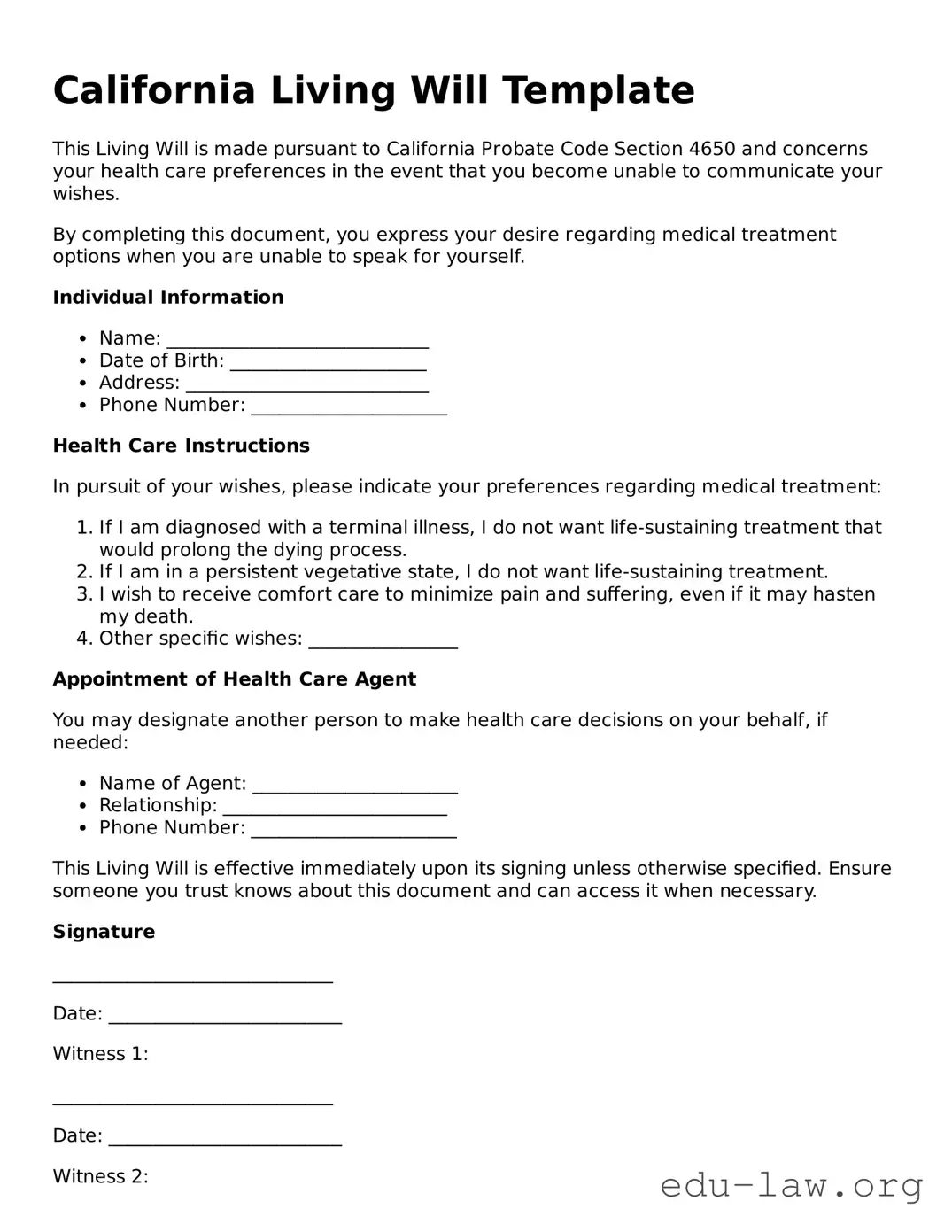The California Living Will form shares similarities with an Advance Health Care Directive. Both documents serve the purpose of outlining an individual's medical preferences in scenarios where they are unable to communicate their wishes. An Advance Health Care Directive combines both a Living Will and a Durable Power of Attorney for Health Care, allowing individuals to designate someone to make medical decisions on their behalf and specify their treatment preferences in detail.
Another related document is a Durable Power of Attorney for Health Care. This legal instrument empowers a designated person to make health care decisions on behalf of a patient when they cannot do so themselves. While a Living Will focuses mainly on end-of-life decisions and treatment preferences, the Durable Power of Attorney for Health Care provides broader authority for health care matters, allowing for more comprehensive representation during medical crises.
The Do Not Resuscitate (DNR) Order is also closely aligned with the Living Will. A DNR order specifically instructs medical personnel not to perform cardiopulmonary resuscitation (CPR) in the event of cardiac arrest. Unlike the broader guidelines provided in a Living Will, which may cover various treatment choices, a DNR focuses explicitly on resuscitation efforts, thus highlighting a patient's wishes in critical medical situations.
A Physician Orders for Life-Sustaining Treatment (POLST) document serves a similar purpose, making it another relevant comparison. POLST provides detailed medical orders regarding an individual’s preferences for life-sustaining treatments, such as tube feeding and resuscitation. This document is often used in conjunction with a Living Will, especially for individuals with serious, advanced illnesses who wish to communicate their treatment goals clearly to health care providers.
The Hospice Care Plan is also akin to the Living Will. This plan details the level and type of care a patient wishes to receive in the context of end-of-life care. While a Living Will provides overarching guidelines for medical treatments, the Hospice Care Plan focuses on comfort and quality of life, ensuring patients receive appropriate support as they near the end of life.
Health Care Proxy documents are similar as they also designate an individual to make health care decisions for someone who is incapacitated. However, this document may not include specific medical treatment preferences like a Living Will or Advance Health Care Directive. It relies on the appointed proxy to act in the best interest and follow the known wishes of the individual during critical moments.
Patient Rights documents are relevant when discussing preferences about medical treatment and care. While they do not function as directives like a Living Will, they inform patients of their rights regarding medical treatment, including the right to refuse treatment. Such documents emphasize a patient’s autonomy in decision-making and can work alongside a Living Will to ensure all rights are observed and respected in medical settings.
The Genetic Testing Consent Form has some intersection with the Living Will, particularly concerning how an individual prefers to handle medical information that may affect their treatment decisions. Although it focuses on genetic testing specifically, it can influence future health care decisions, especially if an individual learns they are predisposed to certain medical conditions that may necessitate advance directives.
Palliative Care Plan documents can overlay with the goals outlined in a Living Will. Both address approaches to care intended to improve the quality of life for patients dealing with serious illnesses. A Palliative Care Plan may outline specific treatments to alleviate symptoms, focusing heavily on comfort and support, similar to the intent behind many provisions in a Living Will.
Finally, Mental Health Advance Directives are essential to consider. These documents allow individuals to express their preferences regarding mental health treatment and the appointment of a representative should they become unable to make decisions for themselves. Like Living Wills, Mental Health Advance Directives seek to ensure personal wishes are respected and followed, emphasizing the importance of an individual’s choices across various domains of health care.
